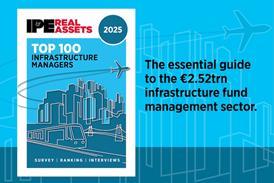A coalition of European estate sector organisations has called for an EU framework for tax-efficient European real estate investment trusts (REITs) to 'overcome obstacles to cross-border property investment and enhance market security and stability'. The campaign group will present a report on EU REITs at the 11th annual Barcelona Meeting Point property fair on Thursday to pressure the European Commission to start work on the issue.
A coalition of European estate sector organisations has called for an EU framework for tax-efficient European real estate investment trusts (REITs) to 'overcome obstacles to cross-border property investment and enhance market security and stability'. The campaign group will present a report on EU REITs at the 11th annual Barcelona Meeting Point property fair on Thursday to pressure the European Commission to start work on the issue.
Commenting on the initiative, Joaquim Ribeiro, finance director at Portuguese shopping centre specialist Sonae Sierra and chairman of the EU REIT Coalition, said: 'Creating an EU REIT would turn the current fragmented EU market for property companies into the largest and likely most efficient property market in the world. Investors, small and large, private and institutional, would greatly benefit from that.'
Barcelona Meeting Point has acted as a rallying point for the EU REIT. Michael MacBrien, director general of the European Property Federation (EPF), and Sonae's Ribeiro took part in a panel discussion organised by the Royal Institution of Chartered Surveyors (RICS) on the subject at last year's event. Afterwards, MacBrien - a passionate advocate of a pan-European REIT structure - led a special closed meeting to set up the lobby group. The coalition now includes the EPF, RICS, the European Landowners Organisation, the European Group of Valuers' Associations and the Urban Land Institute (ULI) Europe.
The EU REIT report presented for the first time in Barcelona this year was drawn up by a research team led by Piet Eichholtz, professor of Real Estate Finance at Maastricht University in the Netherlands. The Maastricht study highlighted five main drivers for an EU framework:
1. the need to address increasing distortions of competition as national REITs multiply;
2. the opportunity to buttress market safety and security. Simply by ensuring a properly functioning Internal Market for real estate investment, the EU can make a major contribution to the control and stabilisation of property markets;
3. the need to correct a situation where savers in small member states cannot access good quality property investment in other member states or even the prime property investments in their own countries;
4. the opportunity to reverse the current trend of initiators of property companies to resort to tax havens;
5. the chance to boost specialisation in cutting-edge real estate and investment in social property that both require development on a European scale.
The report also outlines a preferred structure for an EU REIT with no need for invasive tax harmonisation as no approximation of tax rates on shareholder dividends is required. Professor Eichholtz commented: 'The academic literature and additional empirical evidence presented in our report highlight the very arbitrary nature of differences in national REIT structures in Europe and provide strong and fundamental arguments for the creation of an EU REIT. The EU REIT does not have to be created from scratch. Both in the EU and outside of it, there is a lot of experience with these regimes, and careful analysis of this experience provides direction towards an optimal pan-EU structure'.
Click on the link below to read the RICS comment










